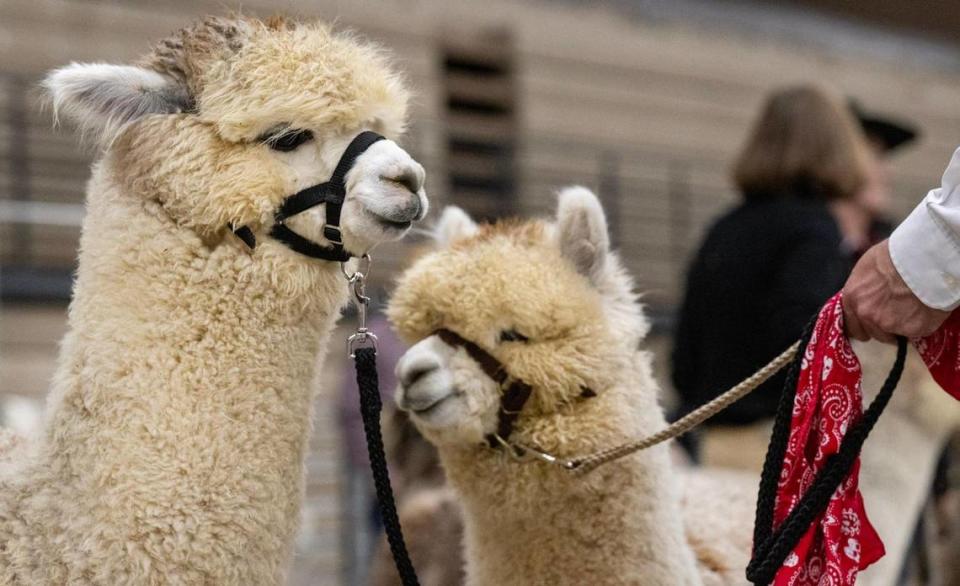May 17—GRAND FORKS — Eight months after
33-year-old Tylor Lee Johnson died
in a Grand Forks County agricultural aircraft crash, his family continues to advocate for change in the industry.
“It’s so hard to not have Tylor here,” Brianne Osowski, Johnson’s sister, told the Grand Forks Herald. “We just don’t want anybody else to ever have to go through this — and ‘this’ is not a new thing.”
Last year, the National Transportation Safety Board reported 13 aerial application deaths, with two each occurring in North Dakota and Minnesota. Considering the small size of the industry — there are only 3,400 agricultural pilots in the nation, according to the National Agricultural Aviation Association — the number of deaths last year is significant, Osowski said.
There are 157 agricultural pilots licensed in North Dakota, according to the North Dakota Aeronautics Commission, and 362 commercially licensed through the Minnesota Department of Agriculture.
The NAAA reports that nationwide, aerial applicators annually treat 127 million acres of cropland, 7.9 million acres of pasture and rangeland, 5.1 million acres of forest land and 4.8 million acres for public health reasons.
Though it’s a small community, aerial applicators support farmers and the local economy in big ways, Osowski said. She believes enhancing safety measures is the least the state can do to return the favor.
Johnson’s family, through the
Tylor Johnson Legacy Foundation,
hopes to enact changes such as wire marker installation, GPS reprogramming and increased awareness of aerial application risks, she said.
Aerial application — crop dusting, as it is informally known — is a line of work with inherent risks, Osowski said. Pilots travel at speeds faster than 100 mph, often only 12 to 20 feet off the ground, to apply treatment to fields below.
“There are a lot of obstacles and conditions that they have to go up against, including bugs, or the glare of the sun or whatever it may be,” she said.
Since Johnson was a third-generation crop duster, he and his family knew the risks.
“What we’re trying to advocate for is just making it safe through the means that we have — decreasing the risk in any way possible,” Osowski said.
She and her family believe the specific risk that caused her brother’s death can be significantly reduced.
Johnson’s aircraft crashed on Sept. 12 after striking a guy-wire, a thin wire attached to a structure — such as a power line — to offer stability. The wires are nearly invisible, according to Cole Johnson, Tylor Johnson’s brother.
“When I was in the field the day that it happened, we were trying to figure out what happened,” Cole Johnson said. “I was looking around, and there was nothing that I could see. Even from standing (on the ground), I couldn’t see it.”
Wire strikes were the leading cause of aerial applicator crashes in 2023, according to the NAAA, accounting for 28% of all crashes and 67% of fatal crashes.
“It’s a very hot topic within the industry,” Osowski said. “It always has been, and that’s why we’re so adamant about this — because we can do something here to prevent these things from happening.”
After Tylor Johnson’s death, his family began communicating with lawmakers, local power companies, the state aeronautics commission and representatives from the NAAA and North Dakota Agricultural Aviation Association.
“What we’ve really been doing is getting the conversation started,” Osowski said.
The markers don’t need to be installed everywhere, Osowski said, but she hopes emphasis will be put on areas where aerial applicators commonly fly. Her goal is for it to be accomplished over the next year.
“There’s something that can easily be done,” Osowski said. “The cost of these wire markers is $150 each, and with the amount of resources that we have within the state and the amount that these (pilots) impact the economy, I think it’s just the least we can do.”
Logistics are still being considered, such as who would cover the expenses and how the markers can be efficiently allocated to avoid a higher-cost project than necessary, she said.
The Tylor Johnson Legacy Foundation is raising funds for the cause. The inaugural Tylor Johnson Memorial Golf Tournament, scheduled for Monday, May 20, at the Grand Forks Country Club, is expected to bring in approximately $20,000, Osowski said.
After posting about it on Facebook, it took less than two weeks to fill all of the event’s spots, Cole Johnson said.
“It just blew up, which was very awesome to see,” he said.
With such strong support, the family hopes to make it an annual event.
Funding for the tournament came from the entry fees as well as sponsorships, including support from area businesses — especially those in the agricultural community — to family and friends, Osowski said.
“We’re also having a silent auction,” she said. “Many, many Grand Forks local businesses also contributed items for that as well.”
The online auction
has 18 packages available, including a $1,000 shopping spree at Grand Forks clothier RH Standard, an Igloo 70-quart cooler and VIP tickets for an upcoming Zach Bryan concert at the Alerus Center. Bidding opened Tuesday, May 14, and will close at 4 p.m. Monday, May 20.
In addition to wire markers, some funds will go toward wire safety training, Osowski said. Safety training is required to become an agricultural pilot, but there are ongoing, voluntary safety classes that are crucial — such as the wire safety course, Osowski said.
“Safety courses, and advocacy that way, is definitely something that we support,” she said. “But we also are pretty adamant on actually having (wires) physically marked as well.”
Osowski hopes the practice of wire markers becomes implemented nationwide and, further, that aerial aircraft GPS systems are modified to include digital wire markers.
That will require a great deal of collaboration, because there are thousands of power companies that will need to provide information. Beyond that, it will need to be determined who’s responsible for the programming, how it will be updated and other factors.
“Although we’d like to see it go that way, there seems to be a lot more research and work that would need to be done before we can actually see that happen,” Osowski said. “It’s more of a longer-term solution, whereas the physical markers now can be a very immediate solution.”
By continuing to advocate and spread awareness, Tylor Johnson’s family hopes to keep his legacy and memory alive.
“He really had a big impact on people,” Osowski said. “He was more than just an aerial applicator. Tylor was a big part of our lives.”
Signup bonus from





